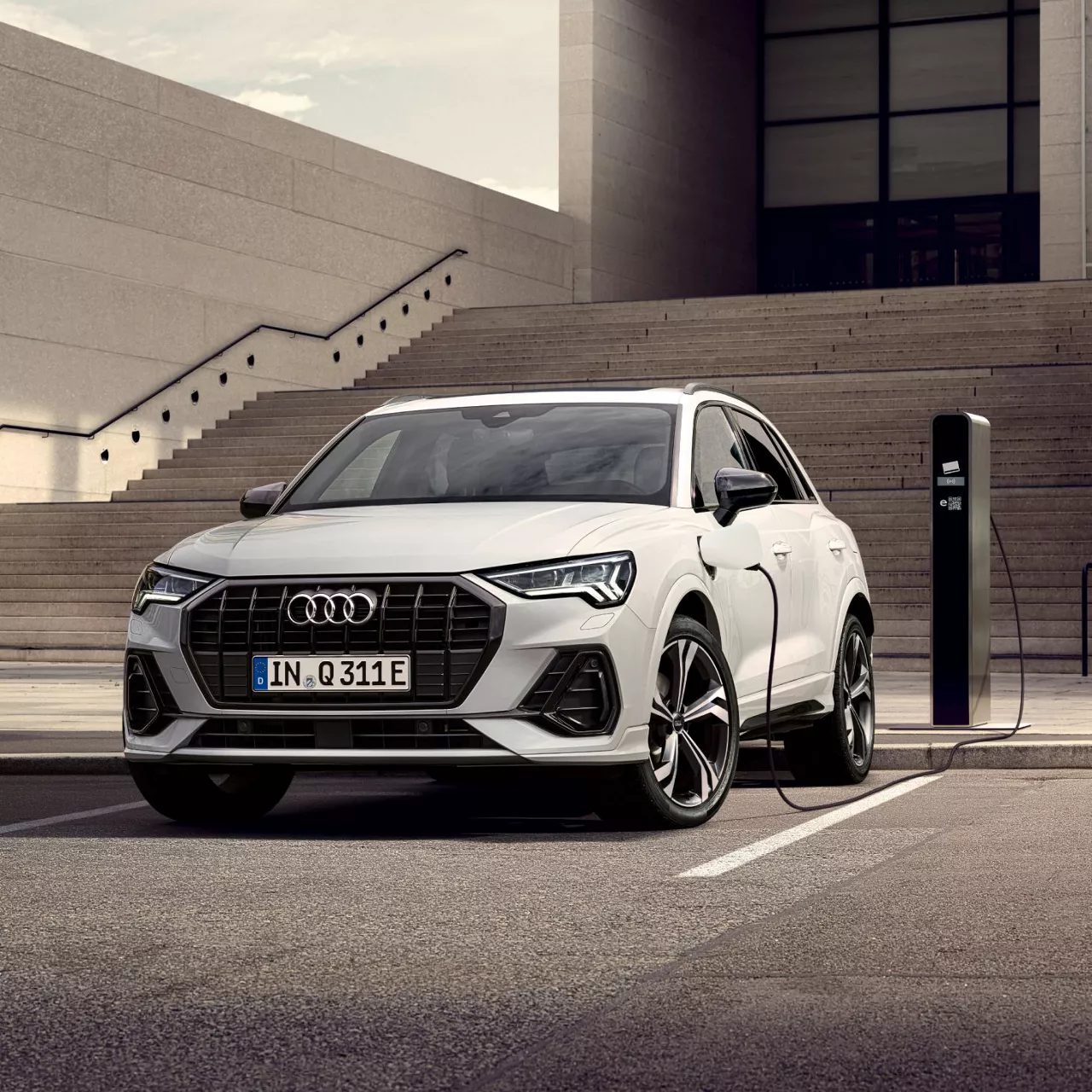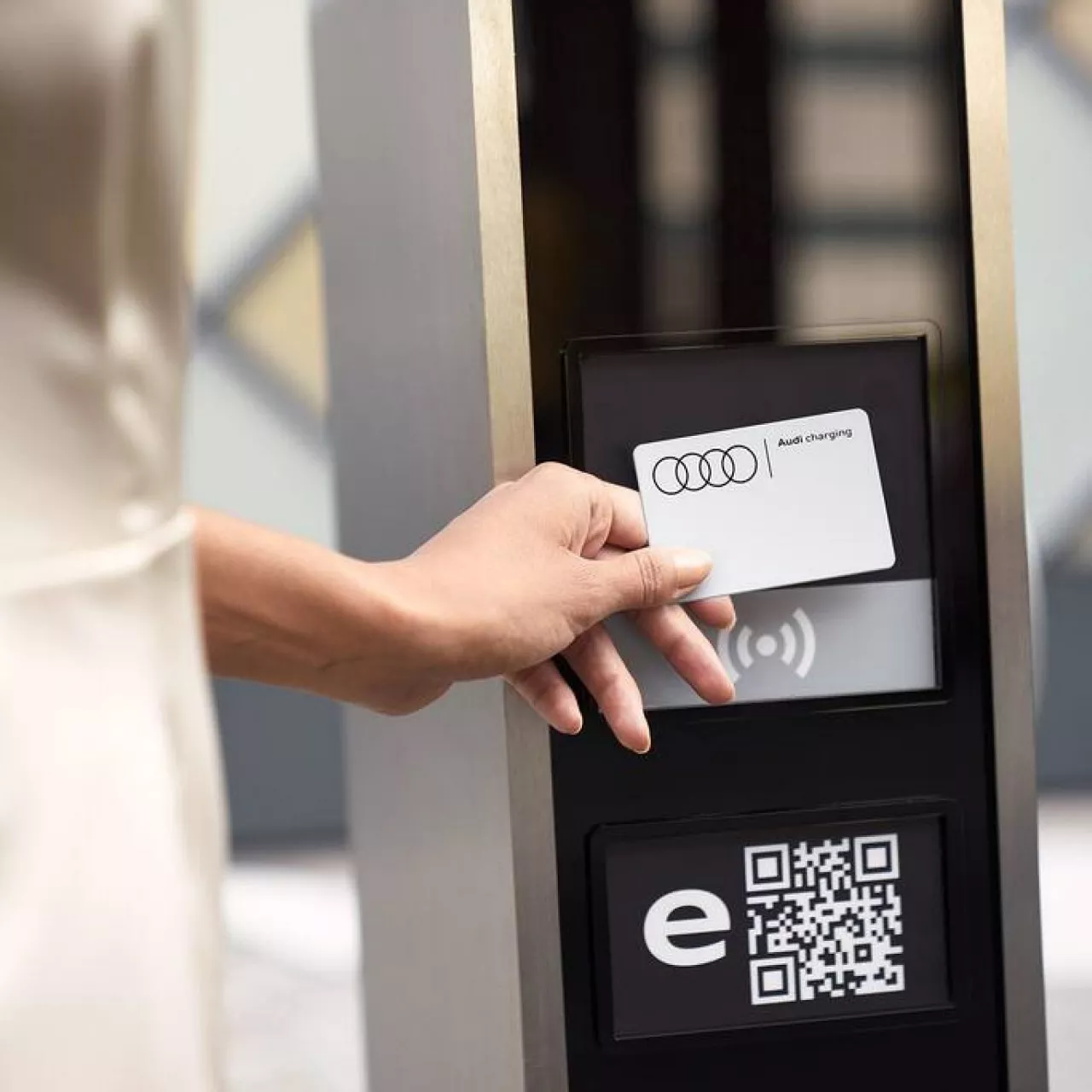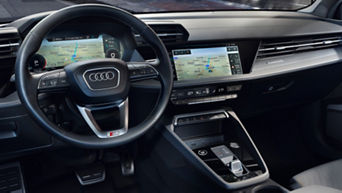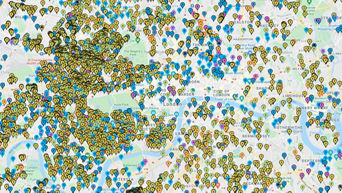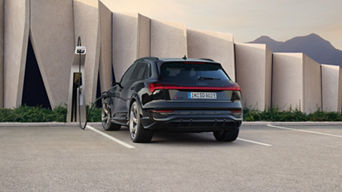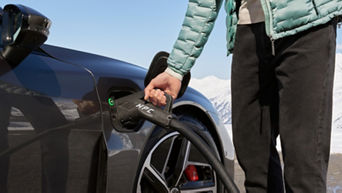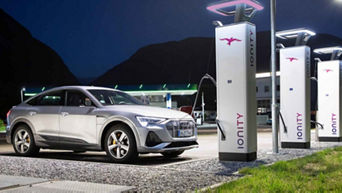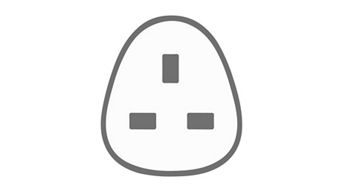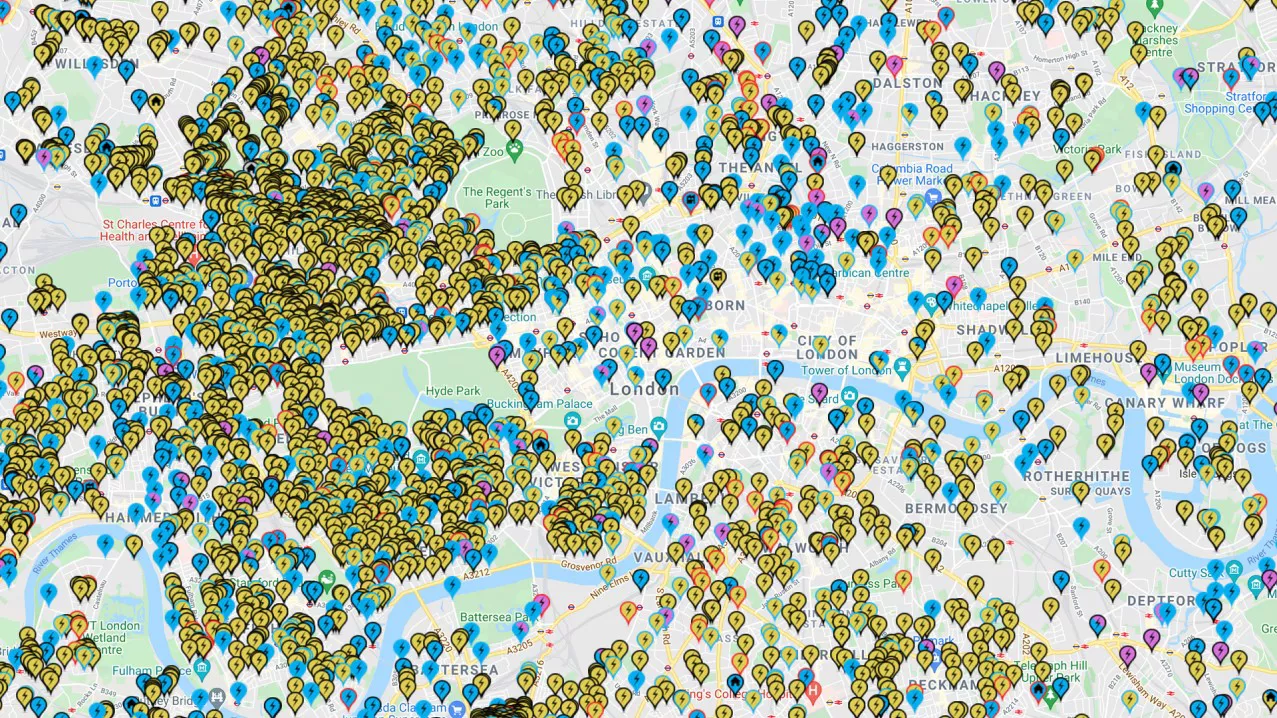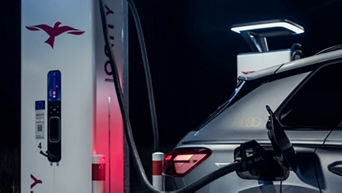> Get easy access to thousands of public electric car charging stations.
> Use your Audi navigation system to find convenient electric car charging stops along your route.
> You can also use the myAudi app to find electric car charging stations and send the route to your car.

Electric car charging on the go
Connect to a powerful network
There are now thousands of public charging stations across the UK. Backed by Government initiatives and spurred on by public demand, more and more charging points are being added to the public network every day. Safe to say, our electric future is happening right now.
3 simple ways to find public charging stations
Need to knows
Electric car charging on the go for the first time? Here’s what you should know about public charging stations.
Different Audi plug types
Audi models charge with the following plug types:
